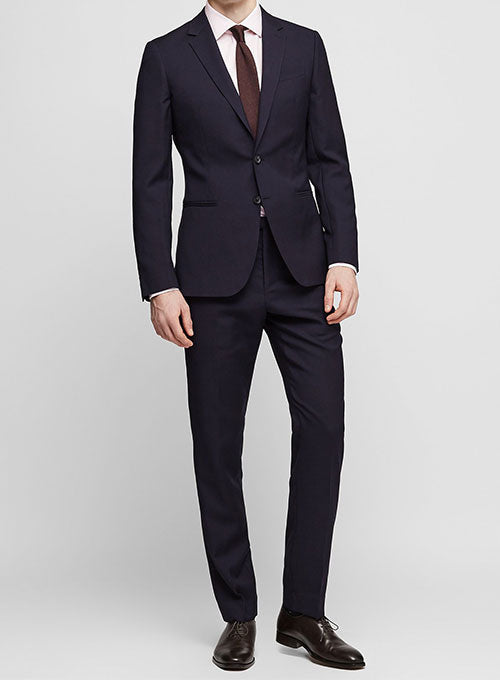Tailor Perth: Experience the Finest Custom Tailoring in Perth
Tailor Perth: Experience the Finest Custom Tailoring in Perth
Blog Article
Understanding the Tailoring Process: From Material Option to Last Fitting for the Perfect Closet
The tailoring procedure is a complex interplay of art and scientific research, beginning with the important choice of textile selection and culminating in the exact adjustments of last installations. Each material type brings distinct top qualities that influence not only the visual charm yet likewise the garment's long life and viability for numerous occasions.
Importance of Textile Choice
Choosing the right fabric is important in the customizing process, as it straight influences the comfort, toughness, and general aesthetic of the final garment. The option of textile establishes the structure for the garment's performance, capability, and design. Various materials possess distinct residential properties, such as breathability, stretch, and weight, which can substantially affect how the garment drapes and fits the body.

A tailored piece made from a suitable material not just showcases workmanship yet also elevates the wearer's confidence. Comprehending the subtleties of fabric choice is extremely important for any tailoring endeavor. It ensures that the final product not only meets the aesthetic desires of the client but also straightens with functional requirements, thus achieving a harmonious balance in between kind and feature in the customized closet.
Kinds Of Fabrics and Their Uses
Comprehending the various types of fabrics offered is important for making informed choices throughout the customizing process. Each fabric possesses unique features that determine its viability for particular garments and events.
Its convenience allows it to be customized into every little thing from t-shirts to dresses. Its all-natural flexibility assists garments maintain shape over time.
Silk radiates high-end and is lightweight, making it perfect for eveningwear and delicate shirts; nonetheless, it needs mindful handling because of its frailty. Linen, with its distinctive surface, is a prominent choice for cozy environments, supplying a crisp and ventilated feel, however it wrinkles conveniently, which might influence the garment's appearance.
Artificial fabrics, such as polyester and nylon, offer sturdiness and resistance to wrinkles, making them appropriate for everyday wear and energetic garments. Comprehending these material kinds and their residential or commercial properties allows for far better decision-making, ensuring that each tailored item not only fits well yet additionally lines up with the intended objective and occasion.
The Tailoring Techniques Explained
The art of customizing relies upon a selection of techniques that transform textile right into well-fitted garments. Central to this procedure is pattern preparing, where a tailor creates design templates based upon the client's measurements and desired design. This preliminary action makes certain that the garment will certainly fit the wearer appropriately before any type of cutting takes place.
As soon as patterns are developed, cutting techniques come right into play. Accuracy is critical as inaccuracies can lead to misfitting garments. Tailors typically utilize different cutting methods, such as single-layer reducing for elaborate designs and multiple-layer reducing for performance on typical patterns.
Basting is an additional essential technique, permitting tailors to momentarily stitch fabric assemble for a preliminary installation (tailor perth). This method offers the opportunity to evaluate the drape and total silhouette prior to final stitching
Seaming methods, consisting of flat-felled joints and French joints, boost the garment's longevity and visual charm. Tailors additionally use methods such as interfacing and cushioning to offer framework and shape to details locations, like collars and shoulders.
Lastly, completing helpful hints techniques, including hemming and side finishing, ensure the garment's longevity while giving a sleek appearance. With each other, these methods develop the backbone of efficient tailoring, causing elegant, tailor-made clothing.

Fitting Modifications and Factors To Consider
After the preliminary tailoring methods have been used and the garment is built, suitable adjustments come to be critical to attaining the perfect fit. These modifications resolve various facets of the garment, ensuring it contours to the wearer's physique and improves general look.

The increase of trousers is one more vital aspect; image source it should sit comfortably over the hips without creating pain, permitting simplicity of movement. Hemming sizes for both pants and skirts ought to mirror the user's favored design while valuing percentages.
Additionally, interest must be provided to the back of the garment, ensuring that there are no unsightly pulls or excess fabric - tailor perth. Each adjustment needs to be diligently considered, as even small alterations can substantially affect the overall fit and visual of the tailored piece, inevitably causing a wardrobe that exudes self-confidence and elegance
Keeping Your Tailored Clothes
Proper upkeep of tailored garments is vital to maintaining their fit and appearance with time. To make sure longevity, normal cleaning is extremely important. Constantly Resources follow the treatment label guidelines, which may advise dry cleansing for fragile textiles or equipment cleaning for more resilient materials. Stay clear of regular laundering, as this can put on down the material and change the garment's form.
Storage is just as essential; usage cushioned hangers for coats and coats to keep shoulder structure, and shop trousers folded up neatly or hung to stop creasing. Secure garments from straight sunlight, which can discolor colors and damages fibers.
In addition, periodic evaluations for small fixings can avoid bigger problems. Inspect for loosened buttons, fraying joints, or indicators of moth damage, dealing with these troubles immediately to preserve the garment's stability.
Finally, take into consideration seasonal turning. Putting on tailored pieces in moderation allows materials to recuperate, expanding their lifespan. By executing these upkeep methods, you can ensure that your tailored garments remain as pristine as the day you first wore them, improving your suitable closet for years to find.
Conclusion
The tailoring procedure, including textile choice, experienced strategies, and accurate suitable modifications, plays a critical function in developing garments that enhance both comfort and design. Understanding the value of maintenance prolongs the life of customized garments, solidifying their worth in a well-curated wardrobe.
Report this page